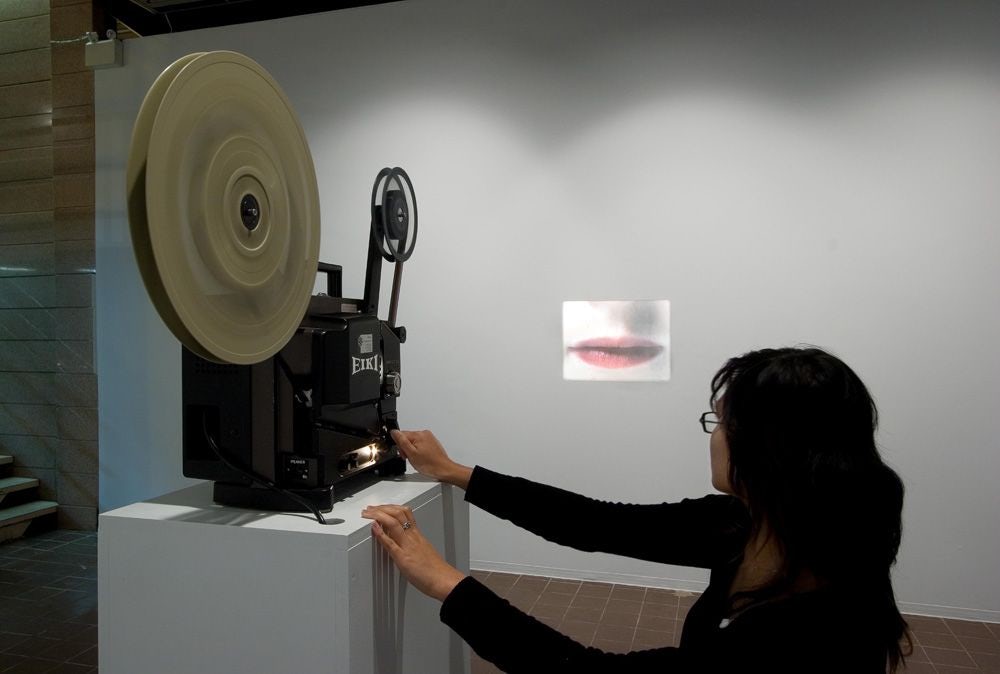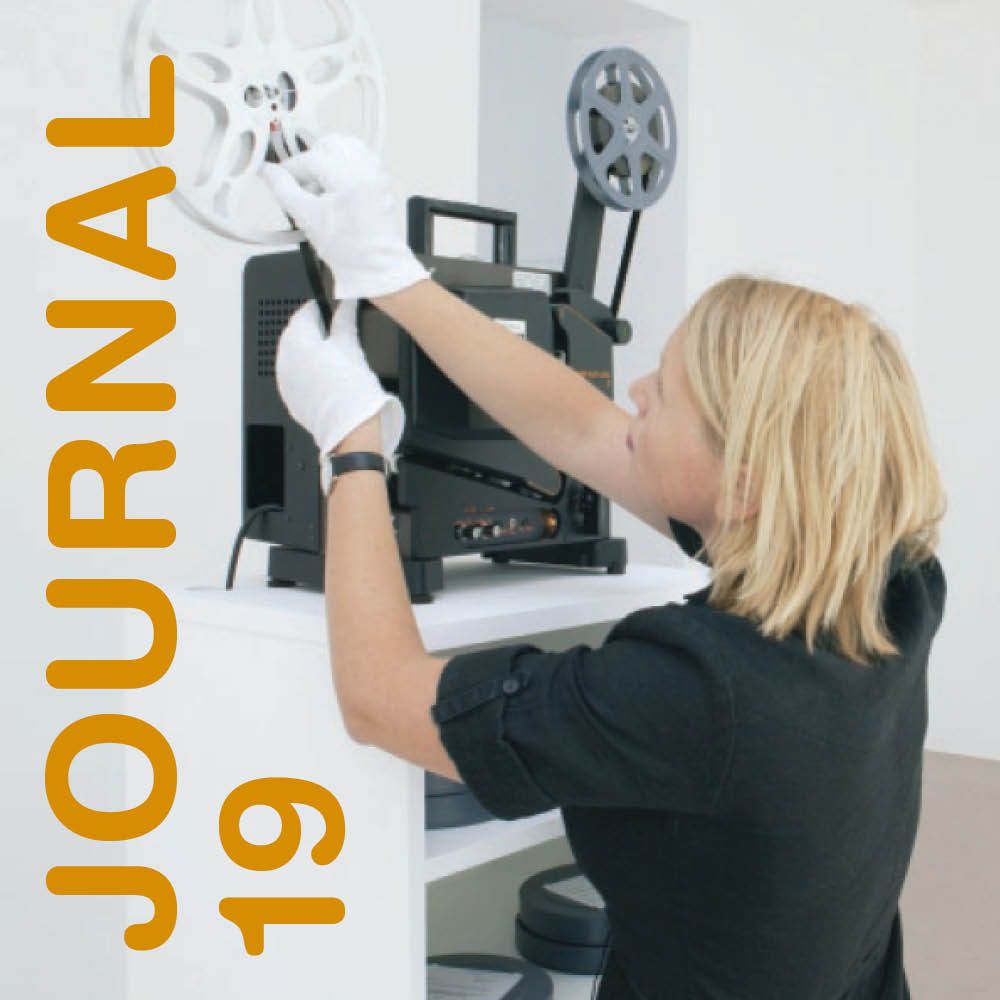
Maria Eichhorn
Film, vidéo, œuvre sonore
2006.11.04 - 12.16
NORA M. ALTER
Maria Eichhorn’s artistic practice defies facile categorization. With strong roots in the legacies of Fluxus and the Conceptual art tradition, Eichhorn’s work has spanned a variety of genres and media: from wall texts to artist books, staged events to probing interviews, broad-ranging symposia to public billboards, and film and video. The latter are the focus of the VOX exhibition, which includes Eichhorn’s 16mm Film Lexicon of Sexual Practices (1999-2005), the video Shares in the Kunsthalle Bern (2005), as well as the video documentation The Social-Historical Background to the Artist’s Contract from her project The Artist’s Reserved Rights Transfer and Sale Agreement by Robert Projansky and Seth Siegelaub (1998), and references to Billboard Istanbul Biennial 1995 (2005).

The elusiveness of Eichhorn’s artistic practice is perhaps best encapsulated by the title of a collaborative book project, No Credits (2005), with which she was involved. The volume, like much of the artist’s work, consists of a joint project initiated by Eichhorn’s students in Zurich and which is composed of statements, interviews, and artistic interventions that comment on and examine the institution of an art school. Eichhorn’s function is that of a catalyst, prompting and coordinating a dialogue with an array of participants. Indeed, Eichhorn’s strategy of serving as a metteur en scene drives many of her projects. These include Curtain (Denim)/Lectures by Yuko Fujita, Mika Obayashi (1989/1997/1998) for which the artist organized an anti-nuclear lecture series followed by a book publication and her contribution to the group show Kopfbahnhof/Terminal (1995) presented at the central train station in Leipzig. For the latter, Eichhorn arranged a raffle of roundtrip tickets between Leipzig and twenty-one diverse destinations. Travellers thus became direct participants and the act of travelling an integral part of the art work. Similarly, for Arbeit/Freizeit, (Work time/ Leisure time) (1996), Eichhorn surveyed employees of the Generali Foundation in Berlin, asking each to describe the relationship between labour and leisure, and to select an object that for them best signified leisure and/or work time. An array of these objects was then displayed in a vitrine in the lobby of the Generali Foundation.
Eichhorn pushes the limits of what conventionally constitutes an artist’s role—she often steers institutional forces in an attempt to subvert their logic. If the public was the central player in earlier projects, since her 1997 contribution to the public sphere exhibition Sculpture. Projects in Münster (Purchase of the Plot at Corner Tibusstrasse/ Breul, Province Münster, Hall 5, No. 672 ) Eichhorn increasingly mobilizes legal documents, contracts, and economic laws that determine the flow of capital. Thus, in the much-noted and award-winning project Maria Eichhorn Public Limited Company, exhibited at the Documenta 11 in 2002, the artist used the production funds she was allotted to incorporate a new company complete with shares.
Film and video comprise but a small portion of Eichhorn’s artistic practice. As with other media with which she works, the material specificity of these media is less important than the critique she uses them to develop. In some instances, such as Billboard Istanbul Biennial 1995 (2005), video functions in a manner that is similar to an artist book—in both cases, what is exhibited is a trace of a previous event or action organized by the artist. But such traces do not simply function as documents, for Eichhorn purposefully and dialogically addresses the present condition and its reflection on the past by inserting footage of recent interviews and other materials. In contrast, Shares in the Kunsthalle Bern is a promotional film, in line with the generic specifications of corporate advertising that functions to promote the sales of stocks or shares in a company—in this instance the Kunsthalle. With more than a small dose of undercutting irony, Eichhorn includes staged shots of potential “buyers.” The film is exhibited along with a two-volume printed matter edition that details the underlying logic of the project and the elegantly framed shares. Eichhorn’s Film Lexicon of Sexual Practices contains seven silent three-minute, 16mm colour clips. In each sequence, a static camera is positioned to film in close-up the representation of one of the terms in the lexicon. These range from activities such as “Cunnilingus,” “Coitus,” and “Breast Licking,” to practices such as “Bondage,” to body parts such as “Mouth,” “Clitoris,” or “Eyes.” The artist provided a dictionary definition of each term. The immobile camera, the silence, and the fragmented view produce the effect of a visual lexicon in which the encyclopaedic definitions are translated into a filmic form. In this work, the presentation of these films is as important as the films themselves. They are designed to be screened as single film, not as loops, with the actual image quite small (about 60 cm wide). A professional film projectionist is present in the exhibition space and is responsible for presenting whichever film a visitor chooses. If there are no requests then no images is projected. The performance of the projectionist is as much a part of the work as the films themselves. In addition, a film projector stands in the exhibition space which is not darkened but filled with natural light. Thus, film in this instance encompasses an entire practice and event and not simply a celluloid image.